Our app about the “Route of the Conde Duque de Olivares” has maps, audio guides, video guides, virtual tours and even augmented reality representations of the period. It is an entertaining “digital route” that will help you understand what happened during that period.
Visit our ROUTE and discover the most emblematic monuments of Olivares that formed part of the life of one of the most famous characters of the 17th century.
Walk in the footsteps of the Count-Duke in a new and unique historical immersion experience.
Just a stone’s throw from Seville you will find the mark of the Baroque. The Villa de Olivares, just 16 kilometres from Seville, hides one of the best-preserved historic-artistic sites in Andalusia. But if there is one thing the town of Olivares is known for, it is its links with the Guzmans, especially with Gaspar de Guzmán y Pimentel, Count-Duke of Olivares and aide to King Philip IV. The Count-Duke of Olivares Route, inviting children and adults alike to let themselves be surprised by this footprint. Follow in the footsteps of the Count-Duke…

This is one of the buildings in the town most closely linked to the figure of the Count-Duke. Founded as a chapel and family pantheon by his parents, the 2nd Counts of Olivares, it reached the rank of Collegiate Church thanks to a papal privilege. It is one of the main examples of 17th century architecture in the province and houses an exceptional artistic heritage of the main artists of the time.
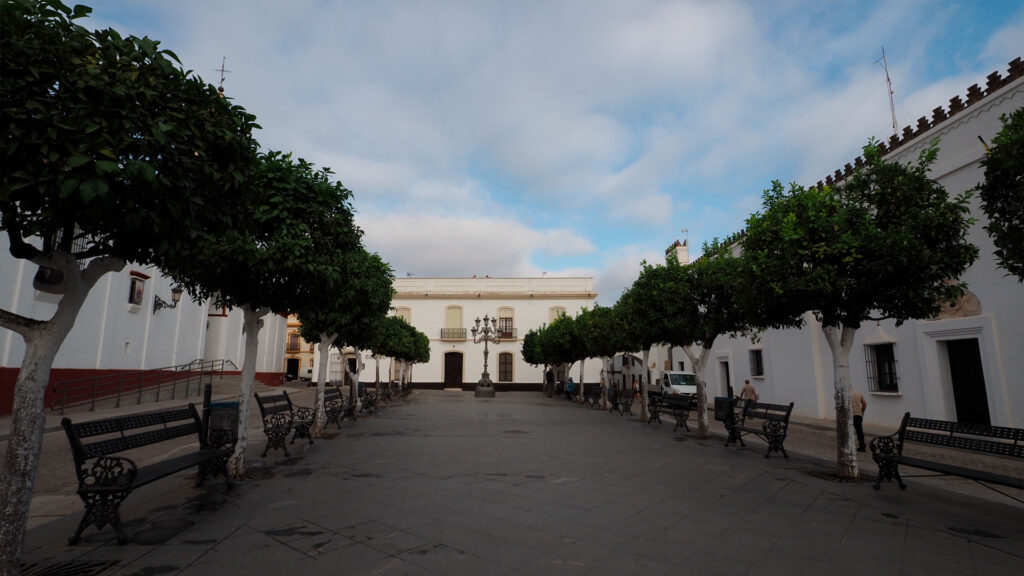
Now the nerve centre of the town, it was once the parade ground of the county palace.
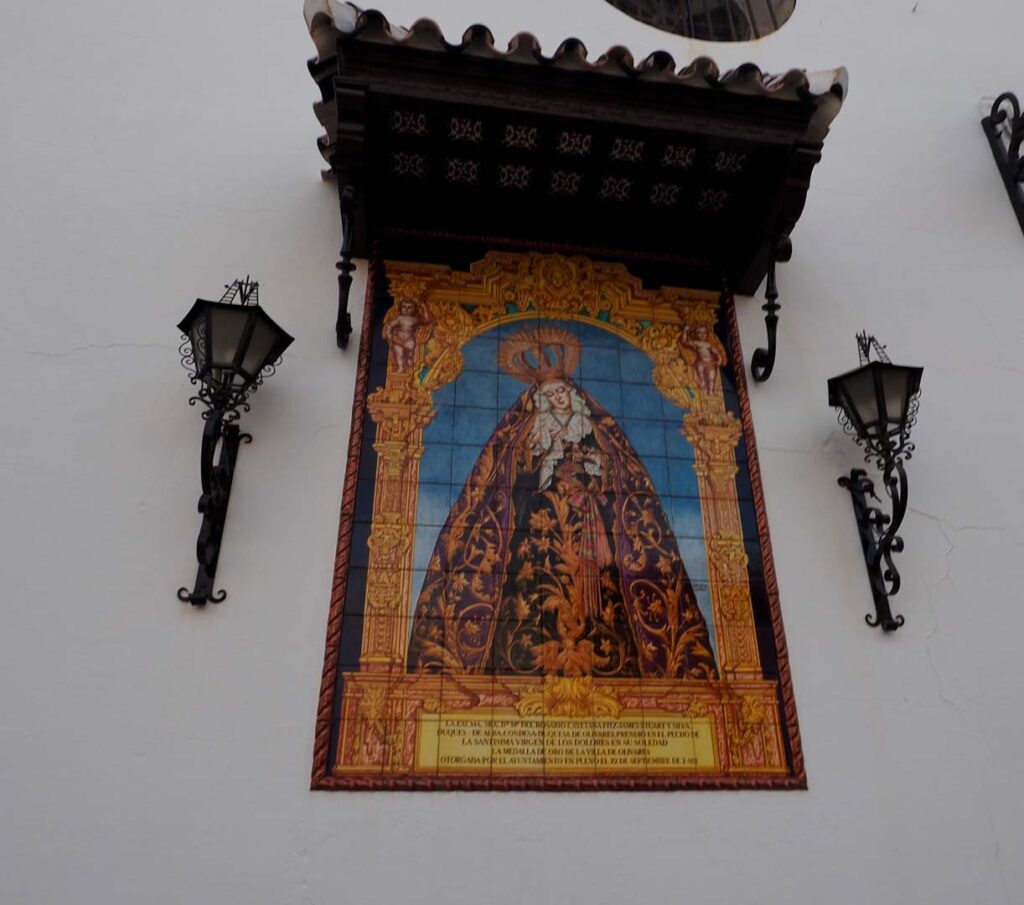
It has its headquarters in an old 16th century Hospital, in whose chapel the Santísimo Cristo de la Salud, Our Father Jesus tied to the Column and Our Lady of Antigua are venerated. The Brotherhood has a beautiful museum located next to the chapel.
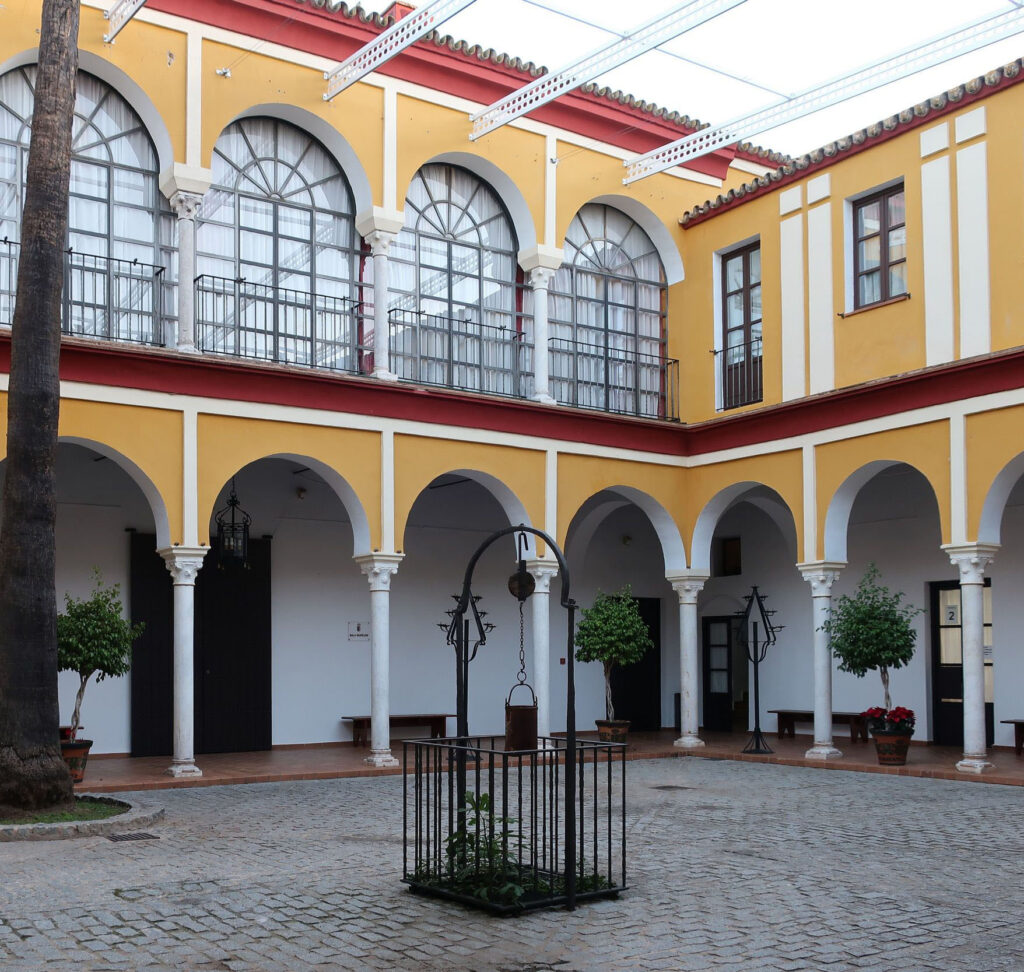
It is currently the seat of the Olivares Town Hall. Residence of the Guzmanes and administrative centre of their County, it is a palace with a Renaissance façade and main porticoed courtyard with marble columns of Genoese origin. The palace houses a permanent exhibition of handcrafted reproductions of Baroque costumes.
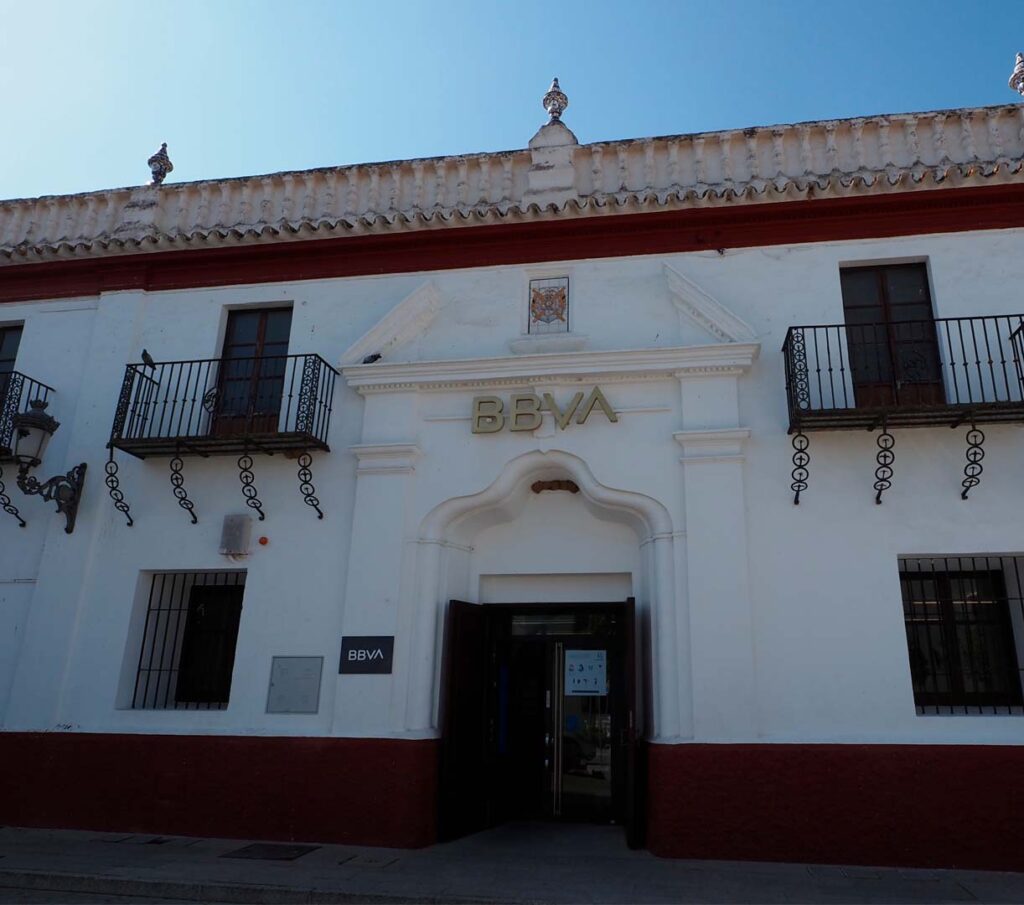
It is a building in which the amount of wheat that was stored in the surrounding villages and places was kept as a spare and as a precautionary measure. It is connected to the Collegiate Church by a covered tunnel-shaped street known as the “Camarín”.
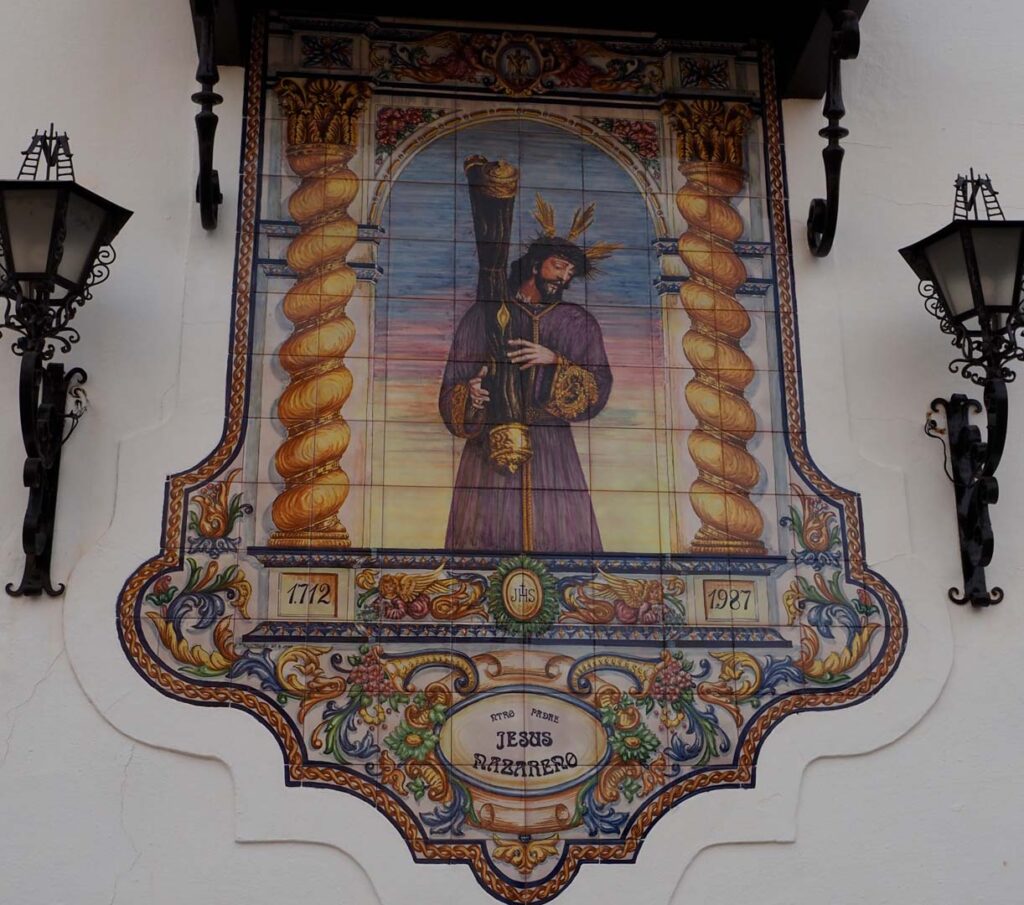
It has traditionally been linked to the Collegiate Church, where its titular figures, Our Father Jesus of Nazareth, the Holy Burial of Christ and Our Lady of Sorrows in her Solitude, are venerated. It also has an exceptional museum in its Casa-Hermandad, a few metres from the Collegiate Church.

This is one of the buildings in the town most closely linked to the figure of the Count-Duke. Founded as a chapel and family pantheon by his parents, the 2nd Counts of Olivares, it reached the rank of Collegiate Church thanks to a papal privilege. It is one of the main examples of 17th century architecture in the province and houses an exceptional artistic heritage of the main artists of the time.

It is currently the seat of the Olivares Town Hall. Residence of the Guzmanes and administrative centre of their County, it is a palace with a Renaissance façade and main porticoed courtyard with marble columns of Genoese origin. The palace houses a permanent exhibition of handcrafted reproductions of Baroque costumes.

Now the nerve centre of the town, it was once the parade ground of the county palace.

It is a building in which the amount of wheat that was stored in the surrounding villages and places was kept as a spare and as a precautionary measure. It is connected to the Collegiate Church by a covered tunnel-shaped street known as the “Camarín”.

It has its headquarters in an old 16th century Hospital, in whose chapel the Santísimo Cristo de la Salud, Our Father Jesus tied to the Column and Our Lady of Antigua are venerated. The Brotherhood has a beautiful museum located next to the chapel.

It has traditionally been linked to the Collegiate Church, where its titular figures, Our Father Jesus of Nazareth, the Holy Burial of Christ and Our Lady of Sorrows in her Solitude, are venerated. It also has an exceptional museum in its Casa-Hermandad, a few metres from the Collegiate Church.
You can only use Olivares App through your App, available for iOS and Android.
You just need to accept the terms and conditions and the notice, and that’s it!
Your experience will begin shortly.
There are several places of interest, choose the one you like best.
Once the App is active you will be able to access the global experience.

Ruta Conde Duque Olivares 2022. Todos los derechos reservados © Nattule. Desarrollo web NattuAR.
We firmly believe that the internet should be available and accessible to anyone, and are committed to providing a website that is accessible to the widest possible audience, regardless of circumstance and ability.
To fulfill this, we aim to adhere as strictly as possible to the World Wide Web Consortium’s (W3C) Web Content Accessibility Guidelines 2.1 (WCAG 2.1) at the AA level. These guidelines explain how to make web content accessible to people with a wide array of disabilities. Complying with those guidelines helps us ensure that the website is accessible to all people: blind people, people with motor impairments, visual impairment, cognitive disabilities, and more.
This website utilizes various technologies that are meant to make it as accessible as possible at all times. We utilize an accessibility interface that allows persons with specific disabilities to adjust the website’s UI (user interface) and design it to their personal needs.
Additionally, the website utilizes an AI-based application that runs in the background and optimizes its accessibility level constantly. This application remediates the website’s HTML, adapts Its functionality and behavior for screen-readers used by the blind users, and for keyboard functions used by individuals with motor impairments.
If you’ve found a malfunction or have ideas for improvement, we’ll be happy to hear from you. You can reach out to the website’s operators by using the following email
Our website implements the ARIA attributes (Accessible Rich Internet Applications) technique, alongside various different behavioral changes, to ensure blind users visiting with screen-readers are able to read, comprehend, and enjoy the website’s functions. As soon as a user with a screen-reader enters your site, they immediately receive a prompt to enter the Screen-Reader Profile so they can browse and operate your site effectively. Here’s how our website covers some of the most important screen-reader requirements, alongside console screenshots of code examples:
Screen-reader optimization: we run a background process that learns the website’s components from top to bottom, to ensure ongoing compliance even when updating the website. In this process, we provide screen-readers with meaningful data using the ARIA set of attributes. For example, we provide accurate form labels; descriptions for actionable icons (social media icons, search icons, cart icons, etc.); validation guidance for form inputs; element roles such as buttons, menus, modal dialogues (popups), and others. Additionally, the background process scans all of the website’s images and provides an accurate and meaningful image-object-recognition-based description as an ALT (alternate text) tag for images that are not described. It will also extract texts that are embedded within the image, using an OCR (optical character recognition) technology. To turn on screen-reader adjustments at any time, users need only to press the Alt+1 keyboard combination. Screen-reader users also get automatic announcements to turn the Screen-reader mode on as soon as they enter the website.
These adjustments are compatible with all popular screen readers, including JAWS and NVDA.
Keyboard navigation optimization: The background process also adjusts the website’s HTML, and adds various behaviors using JavaScript code to make the website operable by the keyboard. This includes the ability to navigate the website using the Tab and Shift+Tab keys, operate dropdowns with the arrow keys, close them with Esc, trigger buttons and links using the Enter key, navigate between radio and checkbox elements using the arrow keys, and fill them in with the Spacebar or Enter key.Additionally, keyboard users will find quick-navigation and content-skip menus, available at any time by clicking Alt+1, or as the first elements of the site while navigating with the keyboard. The background process also handles triggered popups by moving the keyboard focus towards them as soon as they appear, and not allow the focus drift outside of it.
Users can also use shortcuts such as “M” (menus), “H” (headings), “F” (forms), “B” (buttons), and “G” (graphics) to jump to specific elements.
We aim to support the widest array of browsers and assistive technologies as possible, so our users can choose the best fitting tools for them, with as few limitations as possible. Therefore, we have worked very hard to be able to support all major systems that comprise over 95% of the user market share including Google Chrome, Mozilla Firefox, Apple Safari, Opera and Microsoft Edge, JAWS and NVDA (screen readers), both for Windows and for MAC users.
Despite our very best efforts to allow anybody to adjust the website to their needs, there may still be pages or sections that are not fully accessible, are in the process of becoming accessible, or are lacking an adequate technological solution to make them accessible. Still, we are continually improving our accessibility, adding, updating and improving its options and features, and developing and adopting new technologies. All this is meant to reach the optimal level of accessibility, following technological advancements. For any assistance, please reach out to